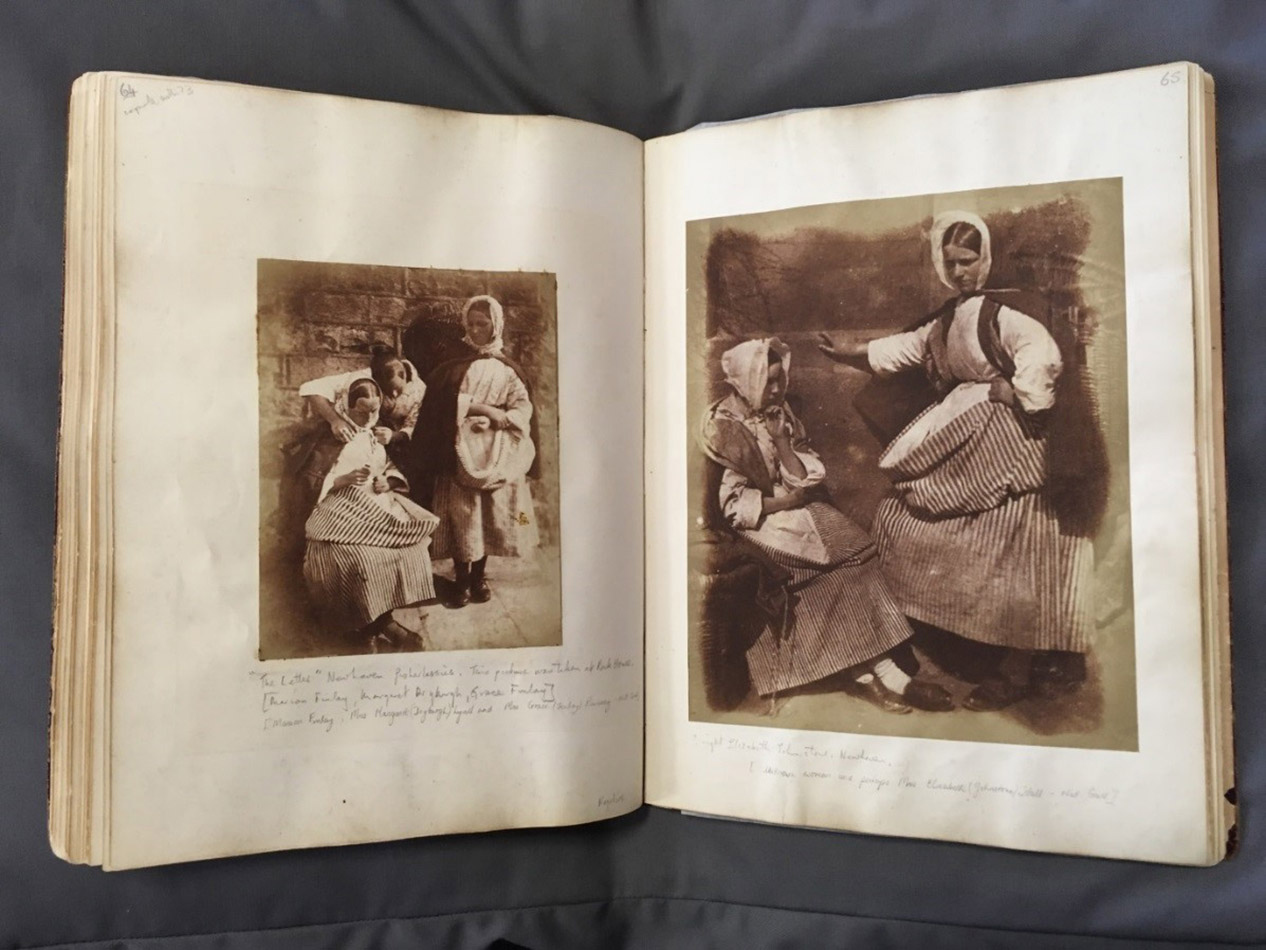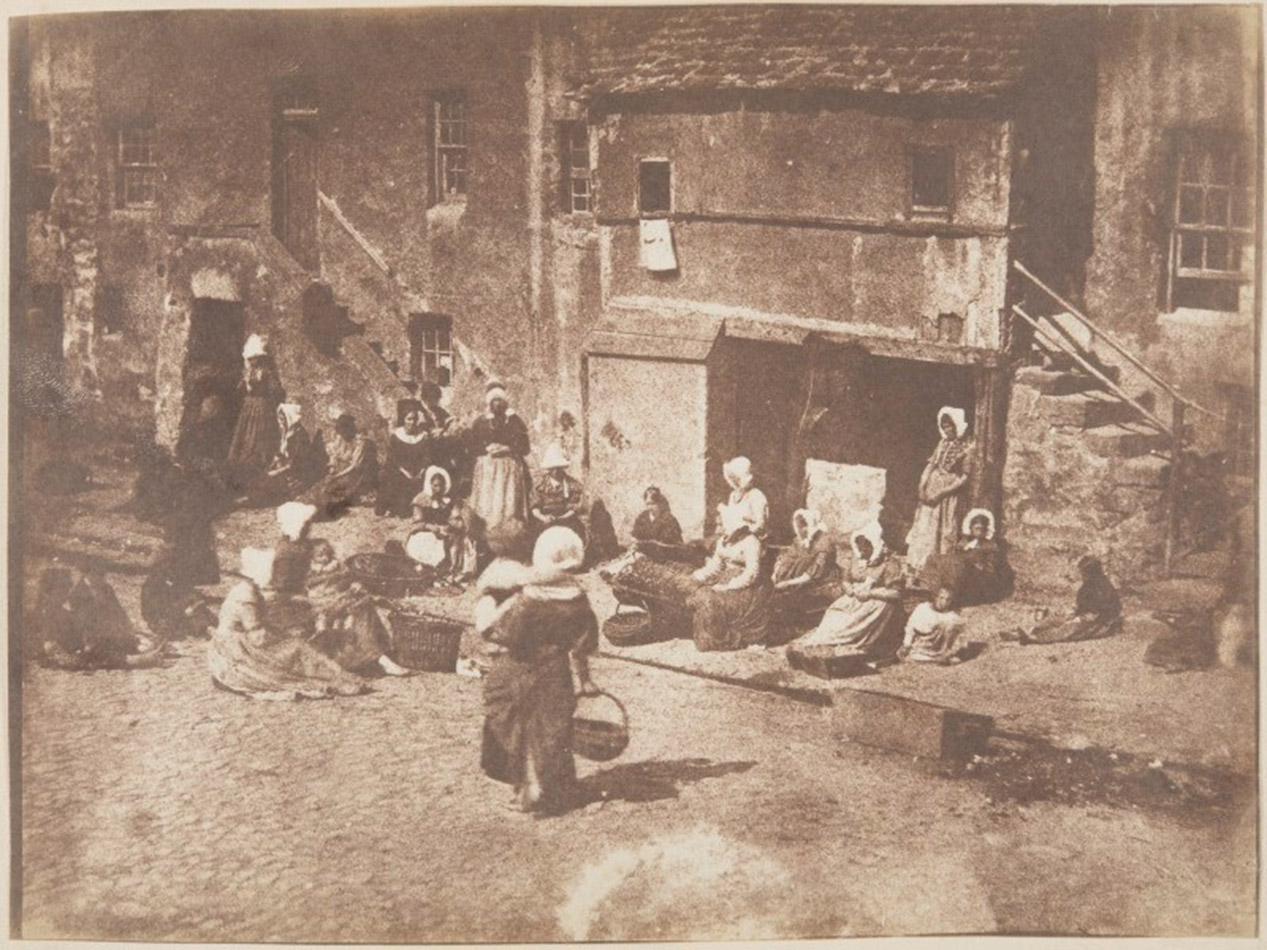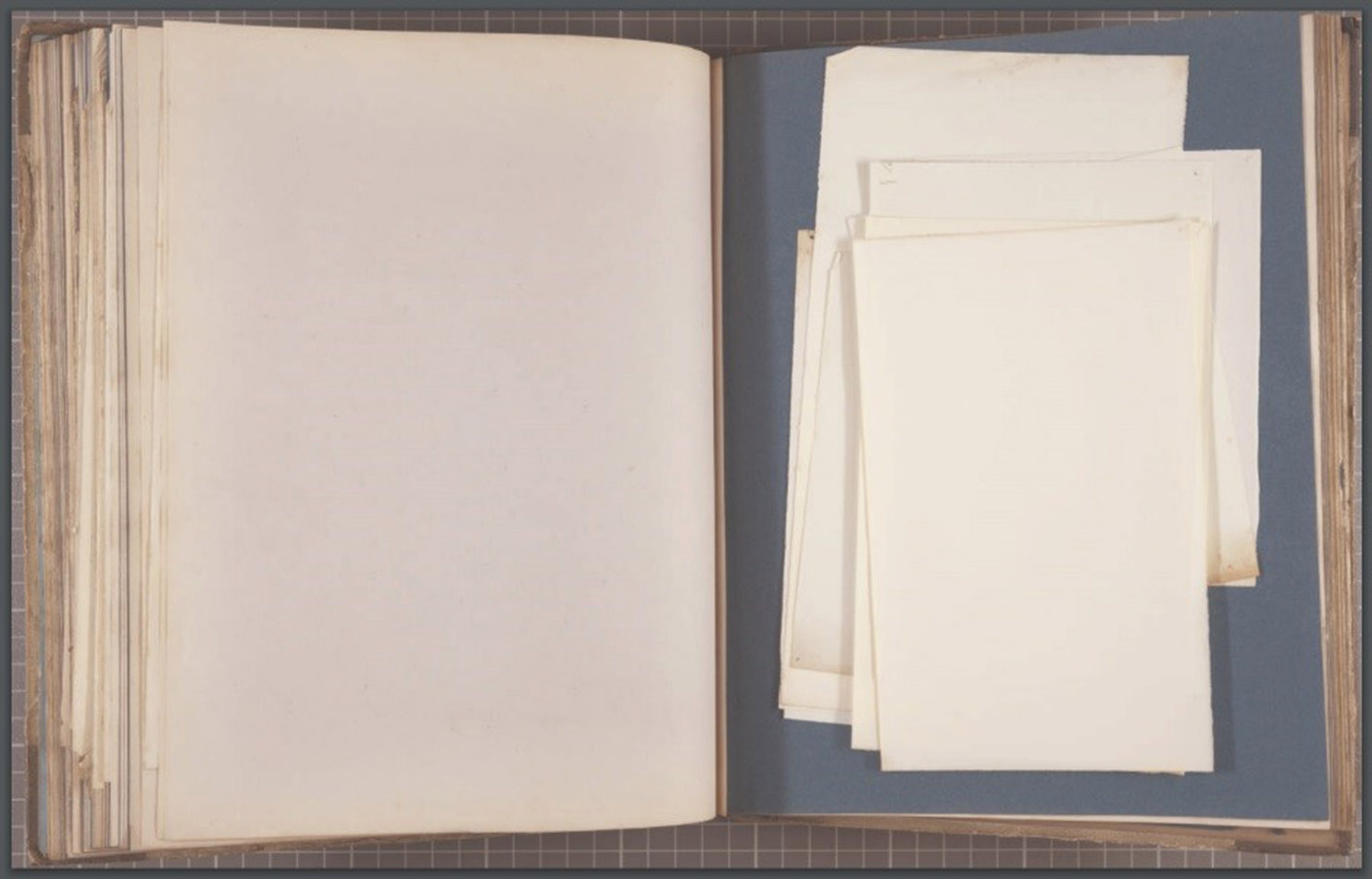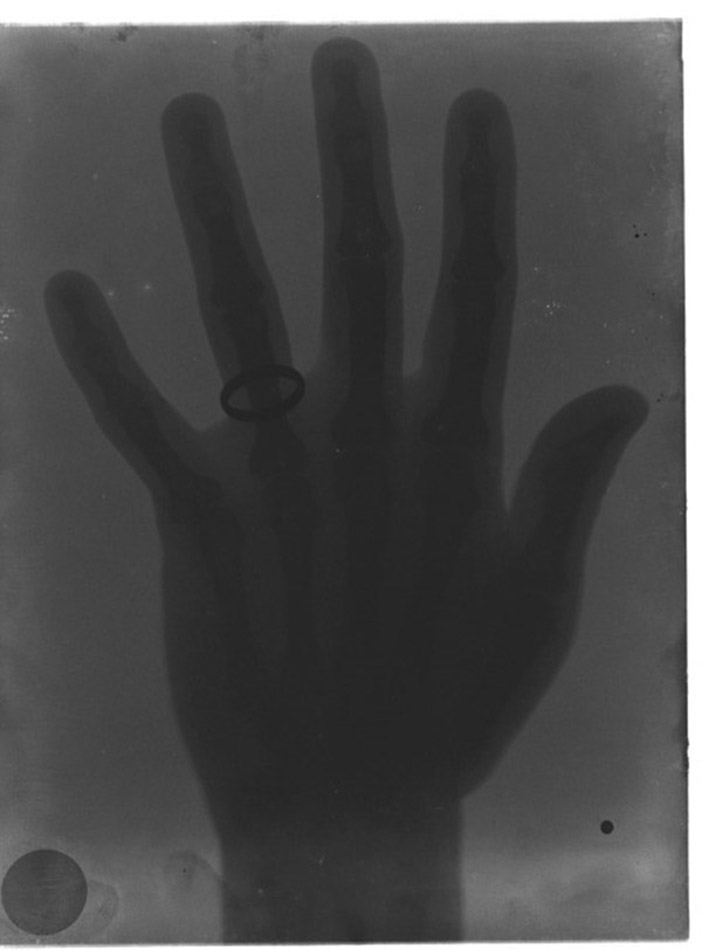2017 Visiting Scholarship: women in the early history of photography
In the third of our reports, Caroline Douglas, AHRC TECHNE funded doctoral student at the Royal College of Art, London, shares with us some of her findings during her University Library Visiting Scholarship 2017.
Hill’s Newhaven fishwife…has something that cannot be silenced, something that fills you with an unruly desire to know what her name was, the woman who was alive there.”
These are the words of the critical theorist Walter Benjamin, writing in 1931 after his encounter with David Octavius Hill and Robert Adamson’s portrait of Elizabeth Johnstone Hall. This August I too spent time with ‘Hill’s fishwife’. My encounter took place at St Andrews where I had the privilege of being a University Library Visiting Scholar for a month.
Working with the early Photographic Collections in Special Collections at St Andrews is a photographic pilgrimage of sorts. In the Reading Room, with blinds drawn, gloves on and grey cushions plumped to cradle albums, I came face-to-face with some of the foundational works of Scottish photography, dating back to the earliest phase of the medium in the mid nineteenth century. This felt like a fitting setting to begin research for my new PhD project on women in the early history of photography in Scotland.

In an attempt to fulfil Benjamin’s task, I set out to study the woman who was alive there. Upon viewing the seminal calotypes for the first time, the temptation to reach out and touch them was strong. I often wondered if touching the surface might somehow assist my research, and bring me closer to the period. Of course, these are some of the earliest extant experimentations in photography: exposing them to direct sunlight – even handling them – contributes to their degradation. Resisting temptation, I dutifully wore the provided gloves, keeping the oils and sweats of my skin at bay.
Photography is much more than alchemy. And the history of photography has long been constructed and reproduced in such a way that many of the living, breathing participants of its earliest period remain unknown. Principal among them are women. Other than the frequently showcased Julia Margaret Cameron, women are invariably subjects, yet rarely the practitioners. My objective in St Andrews was to explore who these women might be.
The setting of the Reading Room made for a truly unique encounter. Martyrs Kirk, where the collections can be viewed, is located just yards from where some of these photographs were made [ALB-6-91]. The proximity of the sources to their place of origin makes for an intimate and sensory experience. Technologically much has changed in the last 175 years, but there are continuities too: the cries of the seagulls can still be heard, the harbour remains very much in use.
My research examines the gendering of photography in its earliest phase. Using sources such as the early Photographic Collection at St Andrews, I explore the historical erasure of the agency of women, their hands, their thinking and self-activity that shaped the medium. From the unknown ‘assistants’ to unnamed sitters (like the widely celebrated fishwives), women were present in the production process.
Women’s agency is inscribed in the very sources in the collections themselves: many of the key albums I viewed in St Andrews were put together by a woman’s hand at some point in time. For example, the recently acquired Isabella and Henry King Calotype Album [ALB-85] is one of the earliest examples of a photographic ‘scrap-book’. It was kept by Isabella King throughout the 1840s. Little is known about the extent of her photographic contribution to the album. ‘Blank’ sheets of iodized paper are filed alongside algebraic workings and a copy of Talbot’s photographic instructions. The papers act as a beautiful metaphor for missing works, either made or preserved by women.

At its core, my research begins from the premise that in the era of ‘founding fathers’, there were women who shaped the development of the field; who placed themselves within it and defined photography as a medium for women as well as for men. From this perspective, ‘blank’ papers, smudged emulsion and traces of fingerprints take on profound significance.

There were times in the Reading Room when the photographs just stopped me in my tracks. On my penultimate day, for example, I was introduced to an image taken by Lady Henrietta Gilmour around 1900. She is thought to be one of Scotland’s earliest women photographers. It is a self-portrait by x-ray, using cutting edge technology at the time. But more than this, it marks her labour. Her physical presence can still be felt, a century on.
We are only now coming to terms with how photography was gendered from its very inception.

Caroline Douglas
PhD Candidate, Royal College of Art
Acknowledgements
I am sincerely grateful to all the Reading Room, Photographic Collections and Archives Teams, who have been very helpful in assisting me with my research over the past few weeks. A special thanks to Rachel Nordstrom, who generously shared her knowledge at every stage. Thanks also to Lucy Soutter and Ben Harman.
Caroline Douglas is an AHRC TECHNE funded doctoral student at the Royal College of Art, London. She also works at Stills: Centre for Photography in Edinburgh. This Autumn she begins her PhD studies, Retouching The Archive: Unknown Women in Early Photography in Scotland.
www.carolinedouglasphotography.co.uk
Twitter @caddydouglas
Very interesting indeed. Can I also commend Mrs Bertram, retired boarding school proprietor, to you? I think her picture may also be in the National Galleries of Scotland as well as at Glasgow Uni. https://eaern.wordpress.com/2017/09/18/mrs-bertrams-music-borrowing-reading-between-the-lines/